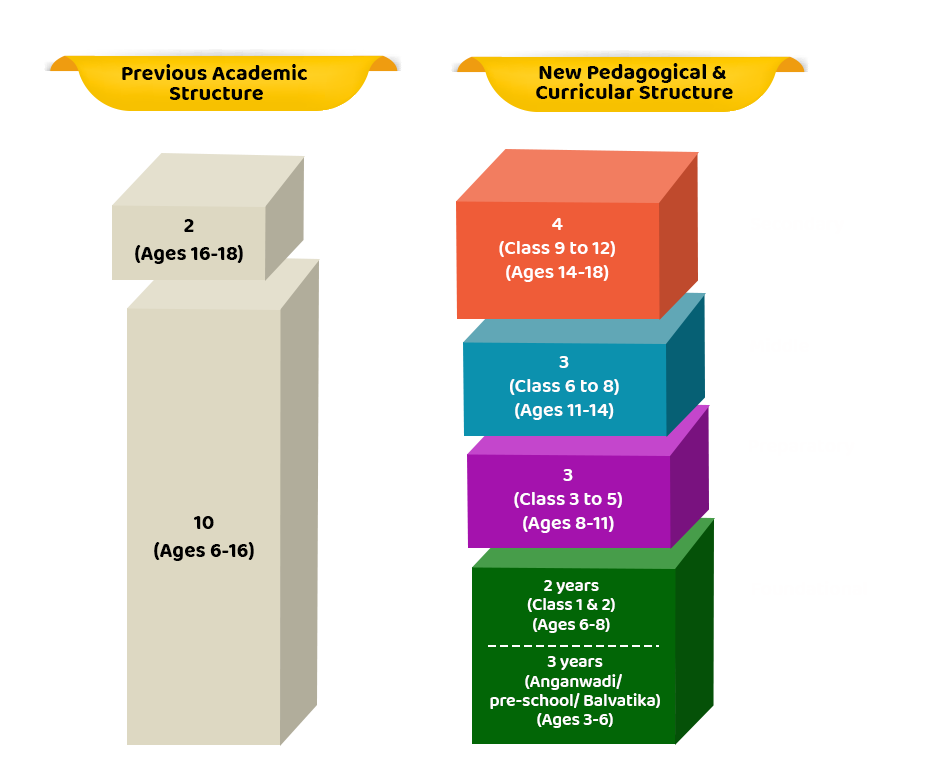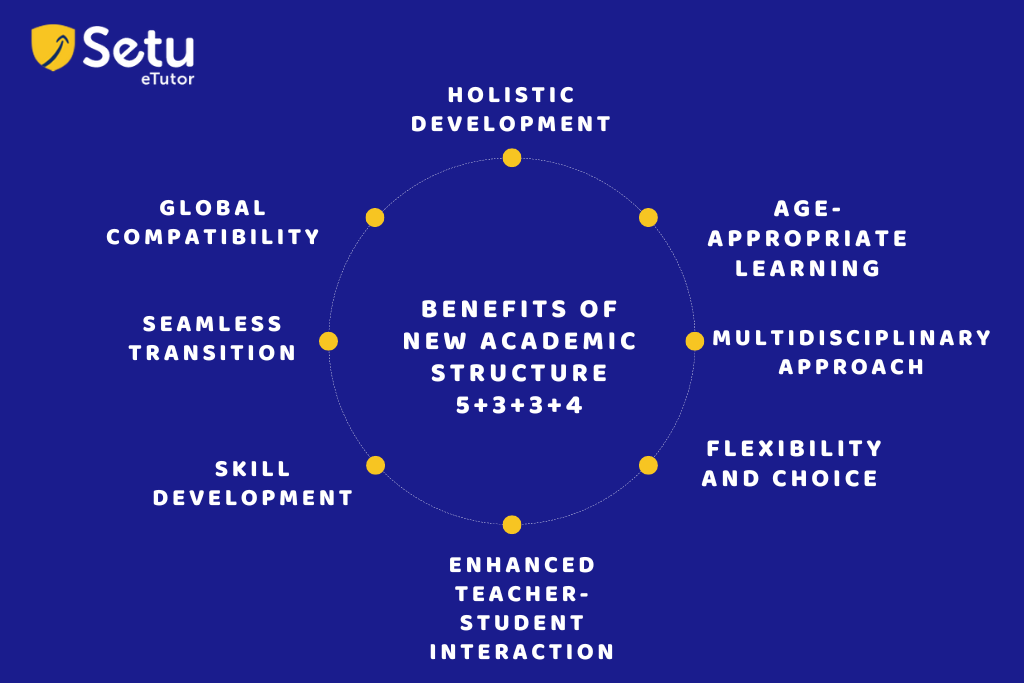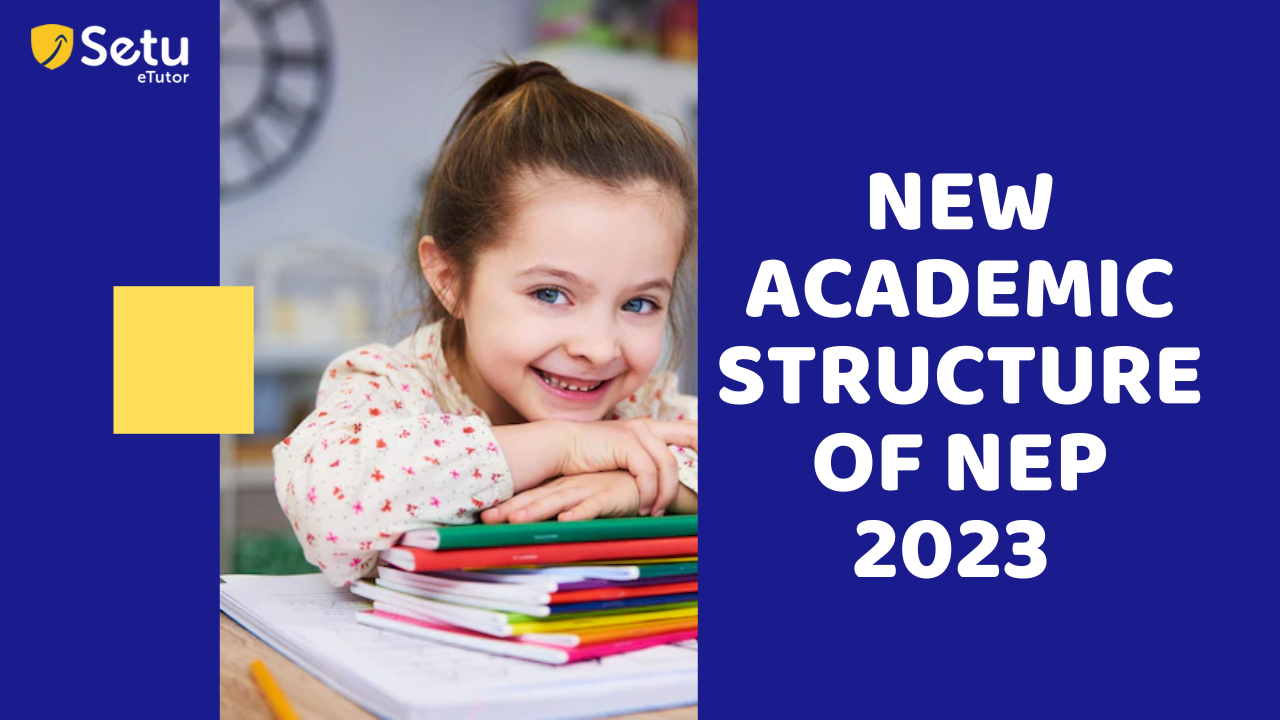In today’s rapidly changing education system, children must learn not just knowledge but also how to learn. The learning process should impart critical thinking, problem-solving, creativity, and transdisciplinary skills in the students. For this structured pedagogy must advance towards flexible, immersive, holistic, inquiry-driven, learner-centered methods.
To build well-rounded personalities, the curriculum should include the humanities, sports, languages, cultures, and values in addition to science and mathematics. Education should develop students’ morality, ethics, reason, and compassion while preparing them for fulfilling careers.
Major reforms are needed to bridge the learning gap between learning outcomes and requirements, ensuring high-quality, equitable education from early childhood to higher education, aimed at improving the learning outcomes by 2040.
Here comes the new resource to amplify the quality of education delivery, i.e., the National Education Policy (NEP)2023.
This National Education Policy 2020 is the first policy of the 21st century, aiming to address the developmental needs of the students. It proposes comprehensive changes in education, including regulation and governance, aligning with 21st-century goals while respecting Indian traditions.
The policy emphasizes nurturing individual creativity and developing cognitive, social, ethical, and emotional capacities. It focuses on foundational skills like literacy and numeracy and higher-order thinking like critical thinking and problem-solving.
By aligning with the vision of NEP 2020, developed a student nurturing platform SETU that helps build inter-personality skills as stated in NEP 2020.
NEP 2020 New Academic Structure:
The policy proposes restructuring the 10+2 school education system into a new 5+3+3+4 structure, covering ages 3-18. This pedagogical and curricular change aims to provide students with a more comprehensive and age-appropriate learning experience.
The existing 10+2 structure of the schooling system is rigid, exam-centric, and focused on syllabus completion. In contrast, the new academic structure, 5+3+3+4, will significantly transform based on students’ age. It will introduce different levels of education that are more flexible and tailored to meet the needs of learners at each stage.

The current 10+2 structure does not cover children aged 3-6, as formal education starts at 6 with Class 1. However, the new 5+3+3+4 structure addresses this gap by including a robust foundation of Early Childhood Care and Education (ECCE) from age 3. This addition aims to enhance children’s learning, development, and well-being during their crucial early years.
Foundational Stage of NEP 2020: New Academic Structure(5 Years)
- The foundational stage in the new academic structure will span five years, catering to children aged 3 to 8.
- This phase forms in Anganwadi/pre-school, Class 1, and Class 2.
- As per NEP 2020, 3 years of Anganwadi followed by two years of primary schooling consisting of class 1 and class 2.
- This stage is flexible, multi-faceted, multi-level, play-based, activity-based, and inquiry-based learning, comprising of alphabets, languages, numbers, counting, colors, shapes, indoor and outdoor play, puzzles and logical thinking, problem-solving, drawing, painting and other visual art, craft, drama, and puppetry, music focusing on the curriculum and pedagogy of Early Childhood Care and Education (ECCE).
Preparatory Stage of NEP 2020: New Academic Structure(3 years)
- The preparatory stage in the new academic structure will span three years, catering to children aged 8 to 11.
- It serves as a bridge between the foundational stage and the subsequent middle stage of education.
- As per NEP 2020, classes 3rd to 5th are included in this stage.
- Emphasis is placed on providing a more in-depth and holistic education through experiential and discovery-based learning methods.
- The curriculum aims to develop critical thinking, problem-solving skills, and a multidisciplinary understanding of various subjects.
- The regional language will be the primary medium of instruction for students up to the fifth grade
Secondary Stage of NEP 2020: New Academic Structure(4 Years)
- The secondary stage in the new academic structure will span four years, catering to children aged 14 to 18.
- This stage covers classes from 9th to 12th.
- This stage emphasizes greater depth, greater critical thinking, greater attention to life aspirations, greater flexibility, and student choice of subjects.
- Focuses on the multidisciplinary study, building on subjects’ subject-oriented pedagogical and curricular style.
- Promotes experiential learning
- Supports vocational education to build competencies and skills required for the 21st century.
The stages described above focus on the curriculum and pedagogy, to enhance learning by aligning with children’s cognitive development. These stages will guide the development of National and State curricula and teaching-learning strategies. It is important to note that these changes do not necessitate parallel modifications to physical infrastructure.
Now, we will discuss how the new academic structure benefits the students.
Benefits of new academic structure 5+3+3+4:

The 5+3+3+4 education system introduced by the National Education Policy 2020 brings several benefits:
- Holistic Development: The system promotes holistic development by recognizing the importance of early childhood education and providing a strong foundation for learning.
- Age-Appropriate Learning: The structure aligns education with the developmental stages of children, allowing for age-appropriate learning experiences and fostering optimal cognitive growth.
- Multidisciplinary Approach: The system encourages a multidisciplinary approach, enabling students to explore diverse subjects and develop a broader understanding of knowledge.
- Flexibility and Choice: It Offers flexibility and choice in education by providing different pathways and allowing students to select subjects based on their interests and aptitudes.
- Skill Development: The system emphasizes the development of critical thinking, problem-solving skills, creativity, and other 21st-century competencies necessary for success in the modern world.
- Enhanced Teacher-Student Interaction: With fewer students in each grade, the system allows for improved teacher-student interaction and personalized attention, fostering better learning outcomes.
- Seamless Transition: The structure ensures a smooth transition between different stages of education, reducing the challenges faced during educational transitions.
- Global Compatibility: The system aligns with global educational standards, making it easier for students to integrate into international education systems if needed.
Conclusion:
The NEP 2020 is a transformative initiative to replace outdated mechanisms in the Indian education system. One significant change is reforming the schooling structure into the 5+3+3+4 system.
This new system focuses on creating a student-centric and multidisciplinary approach to education. It seeks to revolutionize the way students learn and develop, promoting holistic growth and preparing them for future challenges. SETU, an AI-assisted platform in sync with NEP 2020, comes to the rescue of students. It helps achieve students’ holistic development through formative assessments, progress card tracking, and different test pattern techniques.
The information mentioned above is very crucial for the holistic development of the students. This new academic structure would lay a strong path for outstanding learning outcomes. If you have any doubts, please mention them in the comments section to get them resolved.
Please subscribe to our newsletter on the website to get more updates related to the NEP 2020 academic structure .










Leave a reply